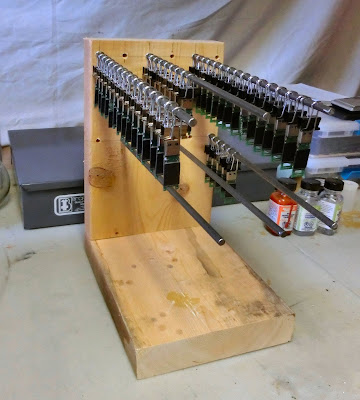| 16 GB | 32 GB | 64 GB | 128 GB | 256 GB | |
|---|---|---|---|---|---|
Usable Capacity
|
15,961,546,752 bytes
|
31,651,479,552 bytes
|
62,911,414,272 bytes
|
125,818,503,168 bytes
|
253,121,003,520 bytes
|
File System
|
FAT32
|
FAT32
|
exFAT
|
exFAT
|
exFAT
|
HD Tune Pro Benchmarks
|
|||||
Read
|
106.5 - 116.7 MB/s
|
114.2 - 127.9 MB/s
|
119.9 - 130.7 MB/s
|
181.2 - 193.3 MB/s
|
56.0 - 146.8 MB/s
|
Average Read
|
111.7 MB/s
|
121.9 MB/s
|
123.5 MB/s
|
187.7 MB/s
|
142.1 MB/s
|
Access Time
|
0.889 ms
|
0.973 ms
|
1.16 ms
|
0.747 ms
|
0.811 ms
|
Crystal Disk Mark Benchmarks
|
|||||
Read Seq Thread
|
121.6 MB/s
|
130.1 MB/s
|
133.3 MB/s
|
208.8 MB/s
|
149.2 MB/s
|
Read Rnd Thread
|
16.4 MB/s
|
14.3 MB/s
|
14.1 MB/s
|
6.03 MB/s
|
22.1 MB/s
|
Read Seq
|
119.8 MB/s
|
127.6 MB/s
|
131.6 MB/s
|
205.4 MB/s
|
146.6 MB/s
|
Read Rnd
|
15.0 MB/s
|
13.3 MB/s
|
13.6 MB/s
|
5.47 MB/s
|
19.2 MB/s
|
Write Seq Thread
|
24.2 MB/s
|
34.8 MB/s
|
38.2 MB/s
|
132.5 MB/s
|
94.1 MB/s
|
Write Rnd Thread
|
0.051 MB/s
|
0.097 MB/s
|
0.69 MB/s
|
0.224 MB/s
|
1.37 MB/s
|
Write Seq
|
22.4 MB/s
|
25.6 MB/s
|
17.8 MB/s
|
129.8 MB/s
|
22.6 MB/s
|
Write Rnd
|
0.054 MB/s
|
0.055 MB/s
|
0.81 MB/s
|
0.0048 MB/s
|
1.07 MB/s
|
USBFlashBench Benchmarks
|
|||||
Read
|
116.70 MB/s
|
124.93 MB/s
|
127.54 MB/s
|
206.48 MB/s
|
131.13 MB/s
|
Write
|
22.72 MB/s
|
29.40 MB/s
|
32.89 MB/s
|
133.83 MB/s
|
55.93 MB/s
|
Link
|
|||||
| 4GB File Copy | |||||
| Copy |
2:38.3 (24.1 MB/s)
|
1:49.5 (34.8 MB/s)
|
1:42.1 (37.3 MB/s)
|
0:30.2 (126.3 MB/s)
|
0:44.8 (85.2 MB/s)
|
| Read |
0:33.4 (114.1 MB/s)
|
0:31.2 (122.1 MB/s)
|
0:30.6 (124.6 MB/s)
|
0:18.4 (206.9 MB/s)
|
0:28.8 (132.7 MB/s)
|
The VIUD's usable capacity is slightly less than the stated capacity which is typical of just about any mass storage device. Part of the overall device's drive space is taken up by the file allocation table which takes more space on larger drives. The other part, however, is just due to the USB board manufacturer using a slightly smaller size than stated. Perhaps this is due to a technical reason or, more likely, an economic one.
HD Tune Pro is a basic disk benchmarking and testing application. Unfortunately the write tests don't seem to work on newer operating systems but the read and error tests do give a nice visual display. I'd like to point out the low minimum read speed for the 256 GB VIUD which can be easily seen in the following graph:
 |
| VIUD 256 GB HDTunePro Read Benchmark |
CrystalDiskMark is another basic drive benchmarking tool that outputs several read and write tests:
- Seq Thread = Sequential read/write, 128 KB block size with multiple queues and threads
- Rnd Thread = Random read/write, 4 KB block size with multiple queues and threads
- Seq = Sequential read/write, 1 MB block size with single thread
- Rnd = Random read/write, 4KB block size with single thread
USBFlashBench is a simple tool that tests multiple block read/write sizes and then uploads the results to a website and creates nice graphs like:
 |
| USBFlashBench Results for the 256 GB VIUD |
Finally, the 4GB file copy test is simply the time it takes to copy a 4 GB (4,000,000,000 bytes) file composed of random content to the VIUD and the time it takes to read it back. Due to caching we have to make sure to unplug the VIUD after the write test and then plug it back in to do the read test.











